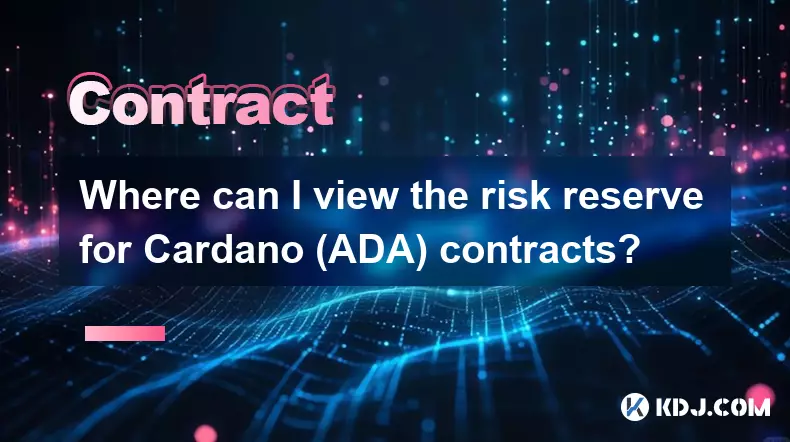-
 bitcoin
bitcoin $112195.049338 USD
2.42% -
 ethereum
ethereum $4124.915858 USD
2.81% -
 tether
tether $1.000570 USD
0.02% -
 xrp
xrp $2.861568 USD
2.25% -
 bnb
bnb $1000.346670 USD
3.04% -
 solana
solana $209.070819 USD
3.38% -
 usd-coin
usd-coin $0.999870 USD
0.02% -
 dogecoin
dogecoin $0.235379 USD
2.65% -
 tron
tron $0.335681 USD
-0.20% -
 cardano
cardano $0.803501 USD
3.38% -
 hyperliquid
hyperliquid $47.120881 USD
3.56% -
 chainlink
chainlink $21.501300 USD
3.44% -
 ethena-usde
ethena-usde $1.000571 USD
0.02% -
 avalanche
avalanche $29.793378 USD
3.62% -
 stellar
stellar $0.366964 USD
2.42%
How do conditional orders on Upbit work?
Upbit’s conditional orders let traders automate trades based on preset conditions like price triggers, helping manage risk and capture gains without constant monitoring.
Sep 21, 2025 at 02:36 pm

Understanding Conditional Orders on Upbit
Conditional orders on Upbit allow traders to set specific criteria under which a trade will be executed automatically. These orders are designed to help users manage risk and take advantage of market movements without constant monitoring. By defining price triggers and execution conditions, traders gain greater control over their entry and exit points in the volatile cryptocurrency markets.
Types of Conditional Orders Available
1. Limit Orders with Price Triggers.Traders can place a limit order that activates only when a certain market price is reached. For example, if Bitcoin drops to $58,000, a buy order at $58,100 can be triggered automatically.
2. Stop-Loss Orders.These orders help minimize losses by selling an asset once it hits a predefined lower price. If Ethereum falls to $3,000, a stop-loss order could execute a sale at that level or better.
3. Take-Profit Orders.When a cryptocurrency reaches a desired profit target, the platform executes a sell order. A user holding Binance Coin might set a take-profit at $450 to lock in gains automatically.
4. OCO (One-Cancels-the-Other) Orders.This combines a stop-loss and a take-profit order. Once one is executed, the other is canceled, ensuring only one action takes place based on market direction.
5. Trailing Stop Orders.This dynamic order adjusts the stop price based on favorable market movement. If Solana rises steadily, the trailing stop follows it at a set percentage below, protecting profits while allowing room for growth.
Setting Up a Conditional Order
1. Access the Trading Interface.Navigate to the trading pair you wish to trade, such as BTC/KRW, and locate the conditional order section within the order panel.
2. Choose the Order Type.Select from available conditional options like stop-limit, take-profit, or OCO depending on your strategy and risk tolerance.
3. Define Trigger Conditions.Enter the trigger price that must be met before the order becomes active. This could be based on last traded price or index price, depending on settings.
4. Specify Execution Parameters.Set the actual order price and quantity. For instance, triggering a buy at $60,000 but placing the order at $59,950 to improve fill chances.
5. Confirm and Monitor.After submission, the order appears in your open conditional orders list. You can edit or cancel it before activation unless already triggered.
Risks and Considerations
1. Market Gaps and Slippage.In fast-moving markets, especially during news events, prices may skip over trigger levels, leading to unexecuted or poorly filled orders.
2. Liquidity Constraints.A conditional order may not fill completely if there isn’t enough volume at the specified price level, particularly for less-traded altcoins.
3. System Latency.Although Upbit’s infrastructure is robust, network delays or high traffic can affect the timing of order execution.
4. Incorrect Configuration.Misconfigured orders—such as setting a stop-loss too close to the current price—can lead to premature execution during normal volatility.
5. Overreliance on Automation.While automation improves efficiency, unexpected market behavior may require manual intervention that conditional orders cannot provide.
Frequently Asked Questions
What happens if my conditional order doesn't get filled after being triggered?If the market moves past your specified limit price immediately after triggering, the order may fail to execute. Using market-type execution where available can reduce this risk, though it may result in slippage.
Can I modify a conditional order once it's placed?Yes, as long as the order hasn't been triggered, you can adjust its parameters such as trigger price, order price, or quantity through the conditional orders dashboard.
Are conditional orders supported for all trading pairs on Upbit?No, not all cryptocurrency pairs support conditional orders. Availability depends on the specific market and regulatory considerations. Check the trading interface for supported pairs.
Do conditional orders incur fees before execution?No fees are charged until a conditional order is triggered and successfully executed. Placing or maintaining the order does not generate any cost.
Disclaimer:info@kdj.com
The information provided is not trading advice. kdj.com does not assume any responsibility for any investments made based on the information provided in this article. Cryptocurrencies are highly volatile and it is highly recommended that you invest with caution after thorough research!
If you believe that the content used on this website infringes your copyright, please contact us immediately (info@kdj.com) and we will delete it promptly.
- News, September 28th, Headlines: Crypto's Wild Ride
- 2025-09-29 20:45:13
- Altcoins, Investors, and Potential Gains: Riding the 2025 Crypto Wave
- 2025-09-29 20:45:13
- Citi Token Services: Revolutionizing Cross-Border Payments and Liquidity Management
- 2025-09-29 20:50:01
- JYAI Token Gears Up for Launch: LCX Exchange Listing Imminent
- 2025-09-29 20:50:01
- Prenetics, Bitcoin Holdings, and Corporate Bitcoin: A New Era?
- 2025-09-29 20:25:11
- Swift, Altcoins, and Shifting Sands: Diving into Crypto's Latest Details
- 2025-09-29 20:25:11
Related knowledge

How do I use the scheduled order feature in Cardano (ADA) contracts?
Sep 28,2025 at 10:18pm
Understanding Scheduled Orders in Cardano Smart ContractsCardano operates on a proof-of-stakes consensus mechanism and uses the Plutus scripting langu...

Where can I view the risk reserve for Cardano (ADA) contracts?
Sep 29,2025 at 09:19pm
Risk Reserve Overview in Cardano (ADA) Ecosystem1. The concept of a risk reserve within the Cardano blockchain does not align with traditional central...

How do I enable the "scalping-only" mode for Cardano (ADA) contracts?
Sep 24,2025 at 03:19am
Understanding Scalping Strategies in Crypto Derivatives1. Scalping in cryptocurrency trading refers to executing multiple short-term trades within min...

What is the settlement time for Cardano (ADA) contracts?
Sep 28,2025 at 04:18am
Understanding Cardano's Contract Settlement Mechanism1. Cardano operates on a proof-of-stake consensus model known as Ouroboros, which fundamentally i...

How do I add margin to Cardano (ADA) contracts?
Sep 27,2025 at 07:54pm
Understanding Margin in Cardano (ADA) Smart ContractsCardano operates on a proof-of-stake blockchain that supports smart contracts through its Plutus ...

What is the maximum position limit for Cardano (ADA) contracts?
Sep 23,2025 at 11:00pm
Understanding ADA Futures and Derivatives Market Structure1. Cardano (ADA) futures contracts are offered by several major cryptocurrency derivatives e...

How do I use the scheduled order feature in Cardano (ADA) contracts?
Sep 28,2025 at 10:18pm
Understanding Scheduled Orders in Cardano Smart ContractsCardano operates on a proof-of-stakes consensus mechanism and uses the Plutus scripting langu...

Where can I view the risk reserve for Cardano (ADA) contracts?
Sep 29,2025 at 09:19pm
Risk Reserve Overview in Cardano (ADA) Ecosystem1. The concept of a risk reserve within the Cardano blockchain does not align with traditional central...

How do I enable the "scalping-only" mode for Cardano (ADA) contracts?
Sep 24,2025 at 03:19am
Understanding Scalping Strategies in Crypto Derivatives1. Scalping in cryptocurrency trading refers to executing multiple short-term trades within min...

What is the settlement time for Cardano (ADA) contracts?
Sep 28,2025 at 04:18am
Understanding Cardano's Contract Settlement Mechanism1. Cardano operates on a proof-of-stake consensus model known as Ouroboros, which fundamentally i...

How do I add margin to Cardano (ADA) contracts?
Sep 27,2025 at 07:54pm
Understanding Margin in Cardano (ADA) Smart ContractsCardano operates on a proof-of-stake blockchain that supports smart contracts through its Plutus ...

What is the maximum position limit for Cardano (ADA) contracts?
Sep 23,2025 at 11:00pm
Understanding ADA Futures and Derivatives Market Structure1. Cardano (ADA) futures contracts are offered by several major cryptocurrency derivatives e...
See all articles


























![[Pycoin] PI Coin -Shocking Listance of Pycoin?! 'Rebellion' This time ... Pay attention to #paikoin [Pycoin] PI Coin -Shocking Listance of Pycoin?! 'Rebellion' This time ... Pay attention to #paikoin](/uploads/2025/09/29/cryptocurrencies-news/videos/pycoin-pi-coin-shocking-listance-pycoin-rebellion-time-pay-attention-paikoin/68da82f23cec1_image_500_375.webp)















































